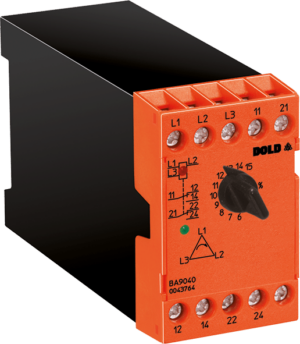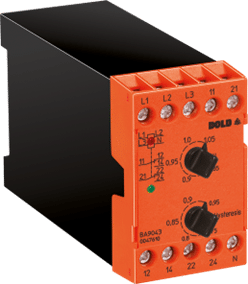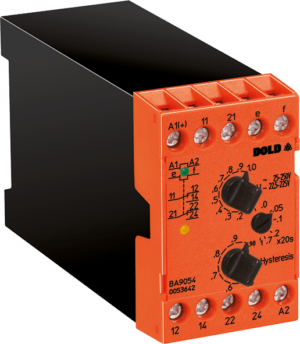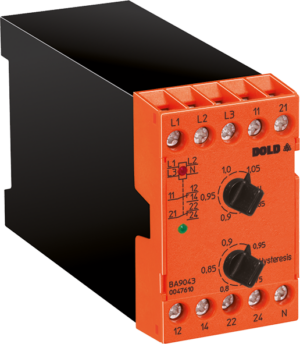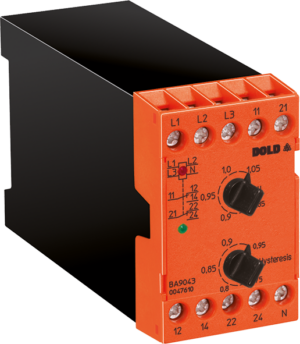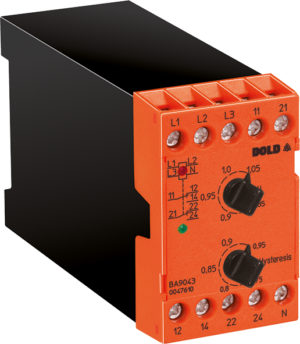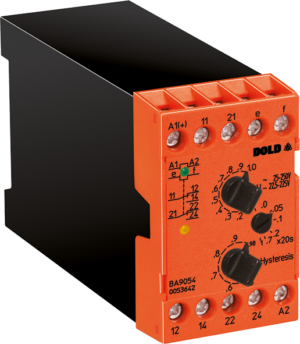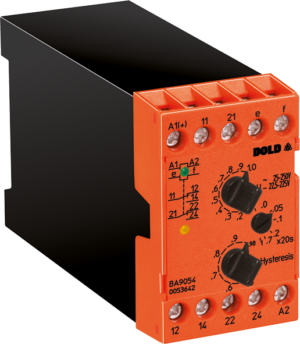Voltage Monitoring Relays and Under voltage Relays Introduction to Voltage Monitoring Relays Definition and Purpose Voltage monitoring relays are protective devices used in electrical systems…
Voltage Monitoring Relays and Under voltage Relays
Introduction to Voltage Monitoring Relays
Definition and Purpose
Voltage monitoring relays are protective devices used in electrical systems to monitor voltage levels and detect abnormalities such as under voltage, overvoltage, and voltage asymmetry. These devices ensure that voltage stays within predefined limits to protect sensitive equipment and maintain system stability. In 3-phase voltage monitoring relays, phase loss and phase failure detection is a critical function to avoid equipment damage and ensure normal operation.
Importance in Electrical Systems
Electrical systems depend on stable voltage to operate safely. Deviations can result in damage to motors, electronics, or control panels. Voltage monitoring relays play a critical role by isolating loads during unsafe conditions, thereby improving operational safety and reducing costly downtime. When combined with phase monitoring relays, they enhance protection by detecting phase loss or reversed phase order in a three-phase system. These relays are especially important in a three-phase network where voltage imbalance can have cascading effects across interconnected systems.
Components and Types of Voltage Monitoring Relays
Single-phase vs Three-phase Relays
Single-phase voltage monitoring relays are typically used in residential or light commercial applications, while three-phase models are designed for industrial environments where phase loss, phase failure, or asymmetry can have severe consequences. 3-phase voltage monitoring relays offer real-time detection and response for a three-phase system.
Digital Under voltage Protection Devices
Digital under voltage relays use microcontroller-based technology to improve accuracy and response time. Features may include adjustable thresholds, display interfaces, and fault logging for enhanced diagnostics. They often include output contact relays to trigger shutdowns or alarms and interface with advanced control circuits.
Overvoltage vs Under voltage Protection
While under voltage relays disconnect circuits when voltage drops below safe levels, overvoltage relays respond to surges or spikes above the nominal threshold. Many devices combine both functions for comprehensive voltage band protection, ensuring operational continuity even when integrated with current monitoring relays. These systems enable under voltage monitoring to proactively protect downstream components.
How Voltage Monitoring Relays Work
Monitoring and Detection Mechanisms
Voltage monitoring relays continuously sample the input voltage and compare it against user-defined set points. If the voltage exceeds or falls below the preset range, the relay trips and sends a signal to disconnect the load or activate an alarm through an output contact.
Voltage Anomaly Interventions
When a voltage anomaly such as sag, swell, asymmetry, or phase failure is detected, the relay actuates its changeover or output contact to isolate the affected circuit. This quick intervention prevents insulation breakdown, equipment overheating, and operational hazards, restoring the system to normal operation once safe levels are re-established.
Applications of Voltage Monitoring Relays
Residential Electrical Systems
In homes, voltage relays protect HVAC units, refrigerators, and home automation systems from under voltage or overvoltage scenarios, especially in areas with unstable grid conditions.
Industrial and Commercial Settings
Industrial applications include protection for motors, control panels, lighting systems, and distribution boards. In commercial buildings, they ensure the reliability of elevators, HVAC, and critical IT systems. Many systems also include current monitoring relays and control circuits for added automation.
Integration with Insulation Monitoring Devices
Voltage monitoring relays are often integrated with insulation monitoring devices to provide complete electrical system diagnostics. This combination enhances early fault detection and compliance with safety standards in mission-critical environments, including renewable energy systems where grid fluctuations are more common.
Protection Strategies
Under and Overvoltage Relay Protection Methods
These methods use preset voltage thresholds and adjustable hysteresis to define safe voltage limits. If voltages deviate beyond these limits, the relay disconnects the circuit, minimizing exposure to potential damage. This dual-function strategy provides reliable protection against voltage-related risks in both single and three-phase installations.
Voltage Band Relay Protection Strategies
Voltage band relays operate within an acceptable voltage range (band). When the voltage drifts outside of this band, the relay activates. These strategies are ideal for equipment requiring tight voltage tolerances.
Installation and Configuration
Voltage Range Adjustments
Voltage monitoring relays come with adjustable dials or digital inputs that allow users to set operating thresholds based on the application’s voltage requirements (e.g., 230V, 400V, etc.). Some models offer auto-sensing capabilities.
Wiring Configurations
Standard wiring includes line and neutral input for single-phase systems or L1, L2, L3 input for three-phase monitoring. Relay output terminals are configured for normally open (NO) or changeover contact operation. An output contact may be used to control alarms, signal PLCs, or disconnect loads.
Benefits of Using Voltage Monitoring Relays
Ensuring Electrical System Integrity
Voltage monitoring relays protect against abnormal voltage events, maintaining voltage quality and preserving the integrity of the entire electrical system. Integration with phase monitoring relays and current monitoring relays ensures a robust defense across both single- and three-phase networks.
Prevention of Electrical Equipment Damage
These relays prevent damage to motors, drives, transformers, and electronic circuits by disconnecting them during dangerous voltage fluctuations or phase loss, extending equipment life and reducing maintenance costs. Their application is particularly vital in renewable energy systems, where voltage stability can be unpredictable.

